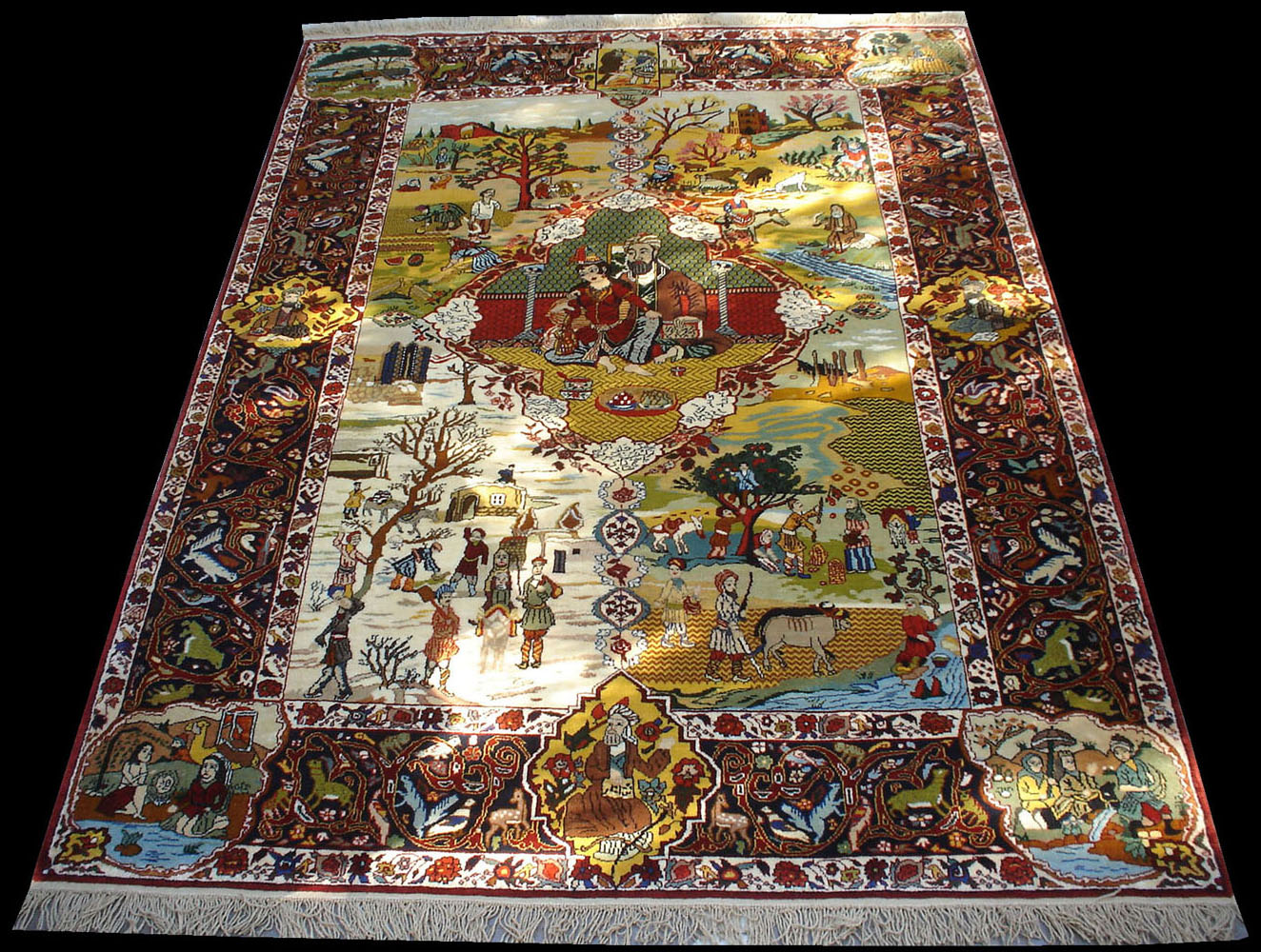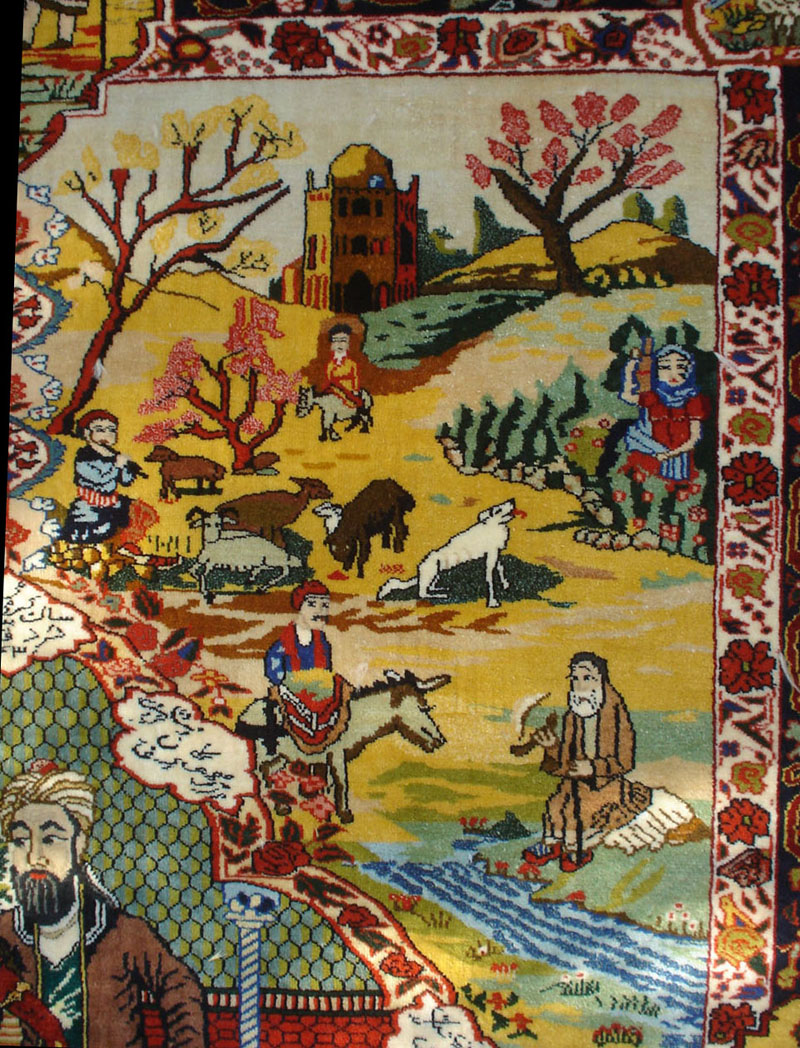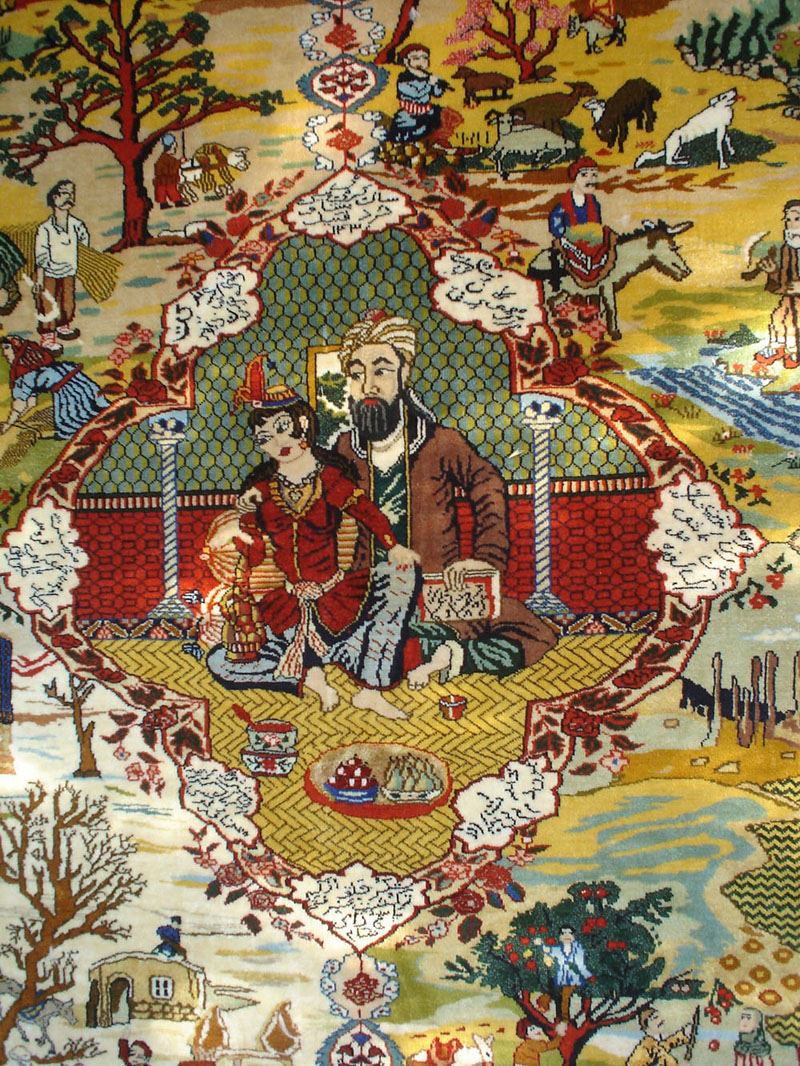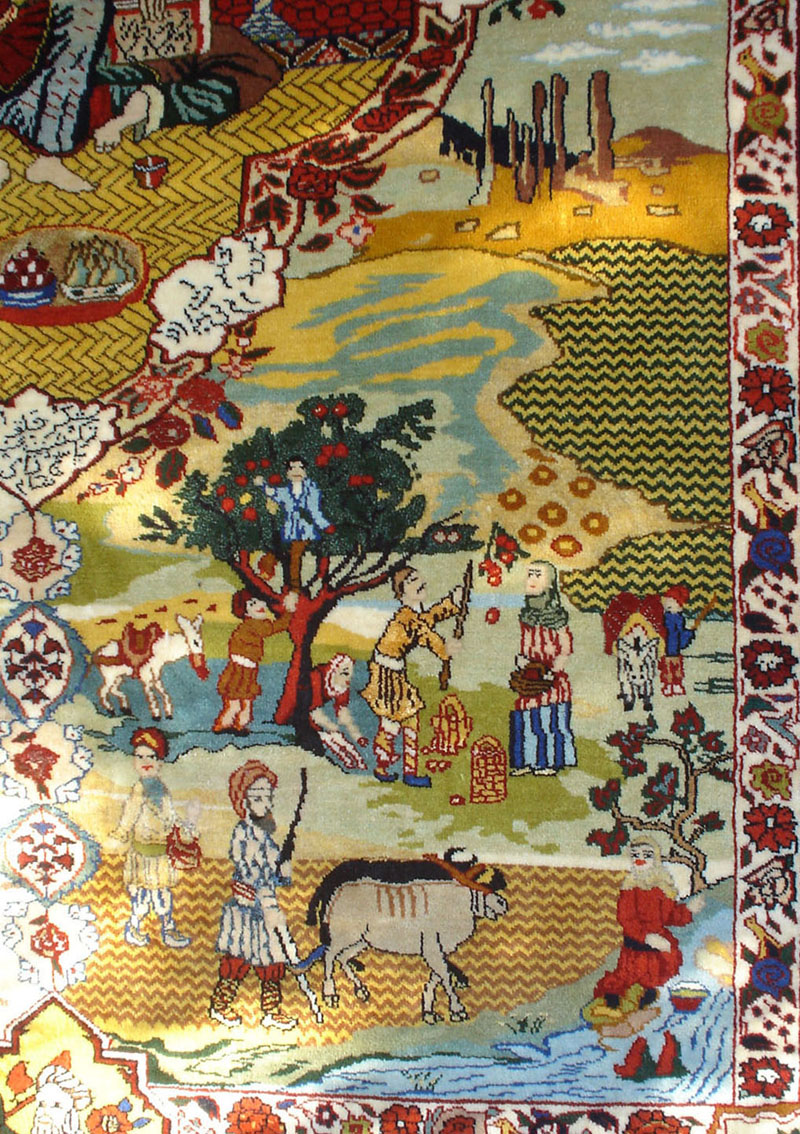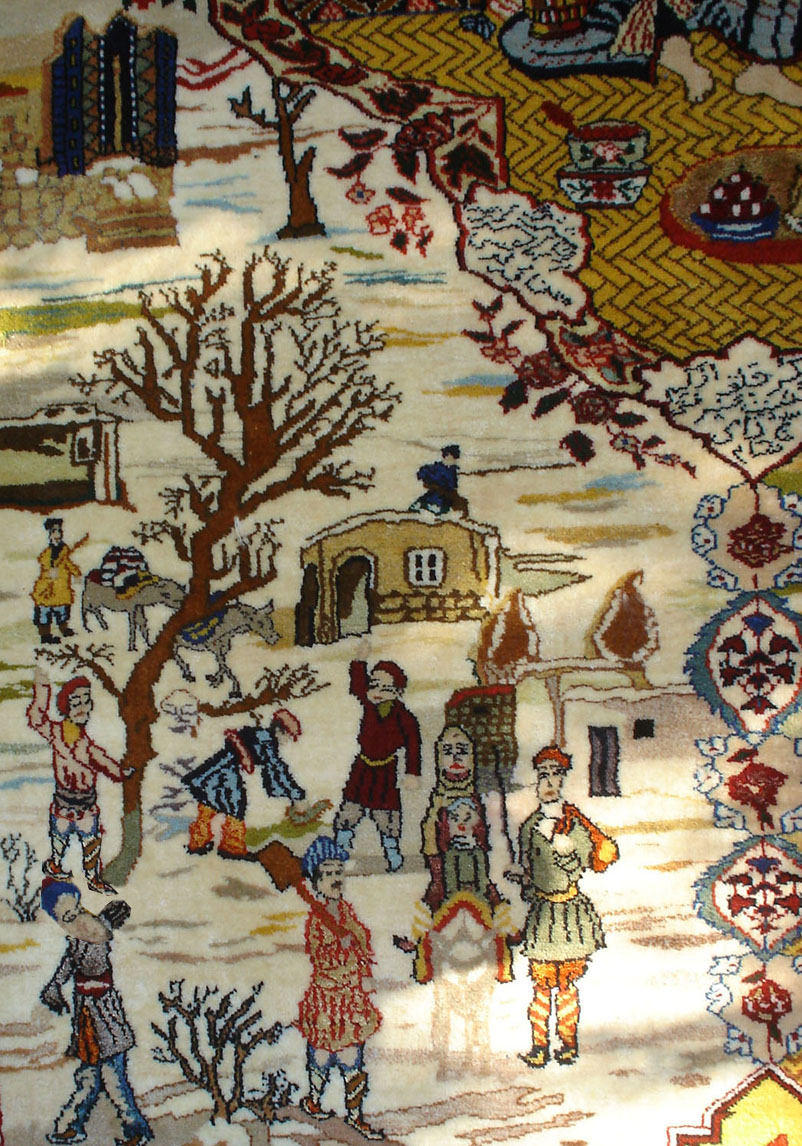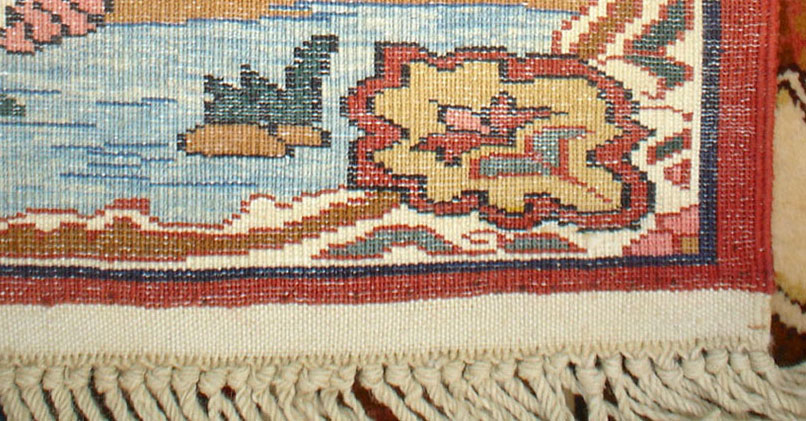|
Tabriz Four Seasons
Rug
Code: TFS01
Size: 203x276cm
Size (ft): 6'7"x9'0"
Area: 5.6 m2
Hand Woven in Azerbaijan
Materials: Pure wool, cotton, natural dyes. Garments of the
figures on the carpet are knotted with silk.
"Dörd Fesil" (Four Seasons)
is a highly valued 19th century Tabriz rug, which is kept in the Art
Museum of Azerbaijan, Baku. This is perhaps the most famous "Four Seasons"
type of rug ever woven.
This carpet combines ancient elements of the decorative art, traditional
symbolism dating back to the spiritual conceptions of the early farming
age, and religious scenes. Each of the four parts of the carpet field is
independent in terms of its composition. It depicts scenes of each season
and represents the images of the rural life. Autumn pictures: harvesting,
tillage and sowing. Winter images: the peasants sweep the snow off the
roofs, whip up the loaded donkeys to the village and work in the field;
children playing snowball
and making a snowman; a peasant family on a donkey and in the foreground
there is a worker with a spade offering his services. The spring landscape
is woven in vivid colors: trees in bloom, a shepherd with a flock of
sheep, a girl with a jar listening to the sounds of his reed-pipe (tütek);
and an old man with a tobacco pipe, talking to a peasant; here the Dome of
Soltaniyeh (Mausoleum
of Il-khan Öljeitü
- the eighth Ilkhanid dynasty ruler in Azerbaijan and Iran from 1304 to
1316) is
depicted on the background. The summertime picture: harvesting, women and
children bind sheaves and take them off the field. The background shows a
camel caravan.
The corner of the main border depicts some religious scenes. Despite the
independence of each of the scenes, they are unified in terms of
composition and style. The illusion of space is achieved through the
three-plane reproduction of the topic motifs. The dominating colors are of
golden and red hues, which help to ensure a common rhythm.
On the left side of the
central medallion, which represents a poet (possibly Omar Khayyam) and his
lover, the masterpiece of Azerbaijani architecture of the 14th century -
The Blue Mosque of Tabriz is depicted. On the right side of the central medallion, Persepolis - an ancient Achaemenid capital is shown. |

